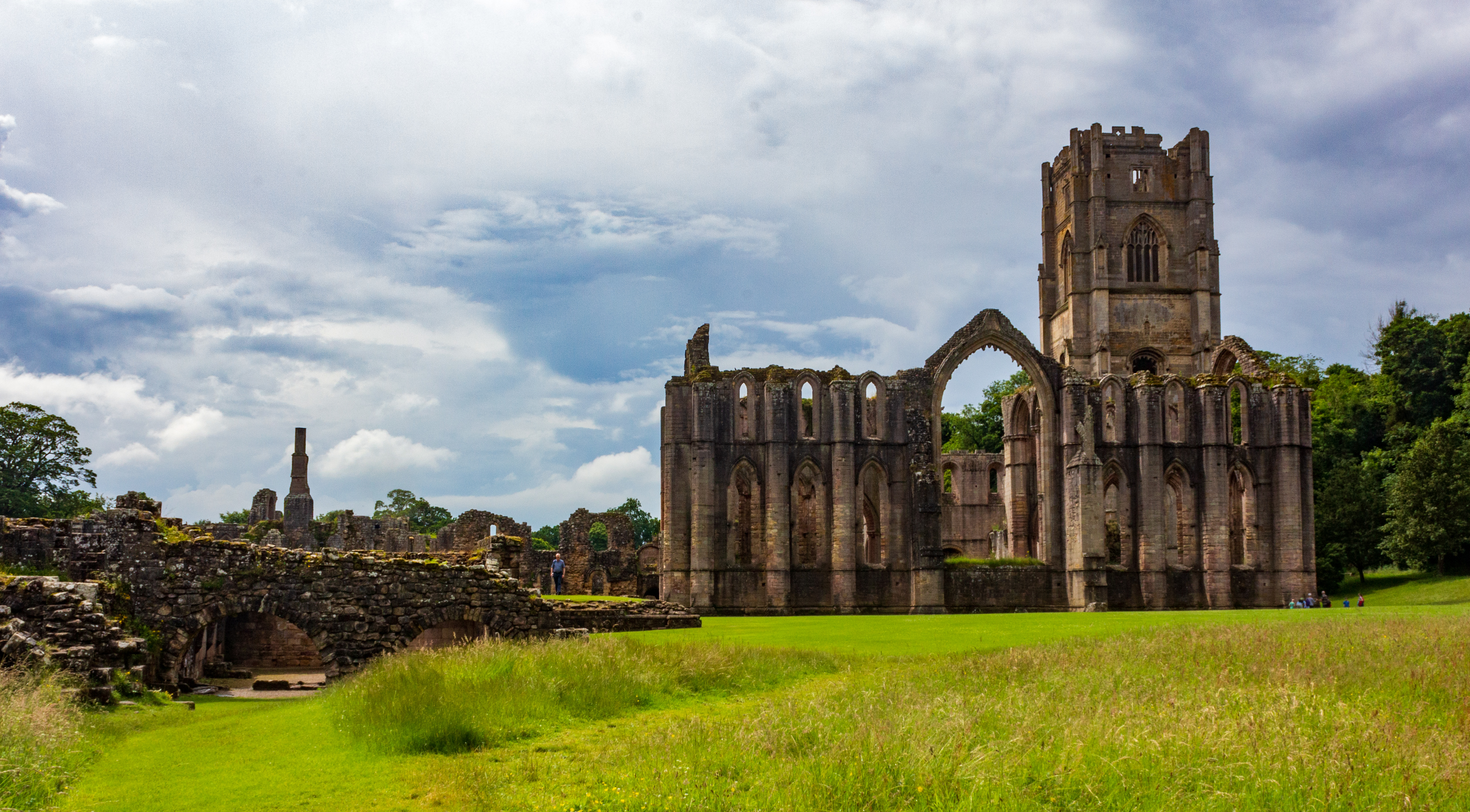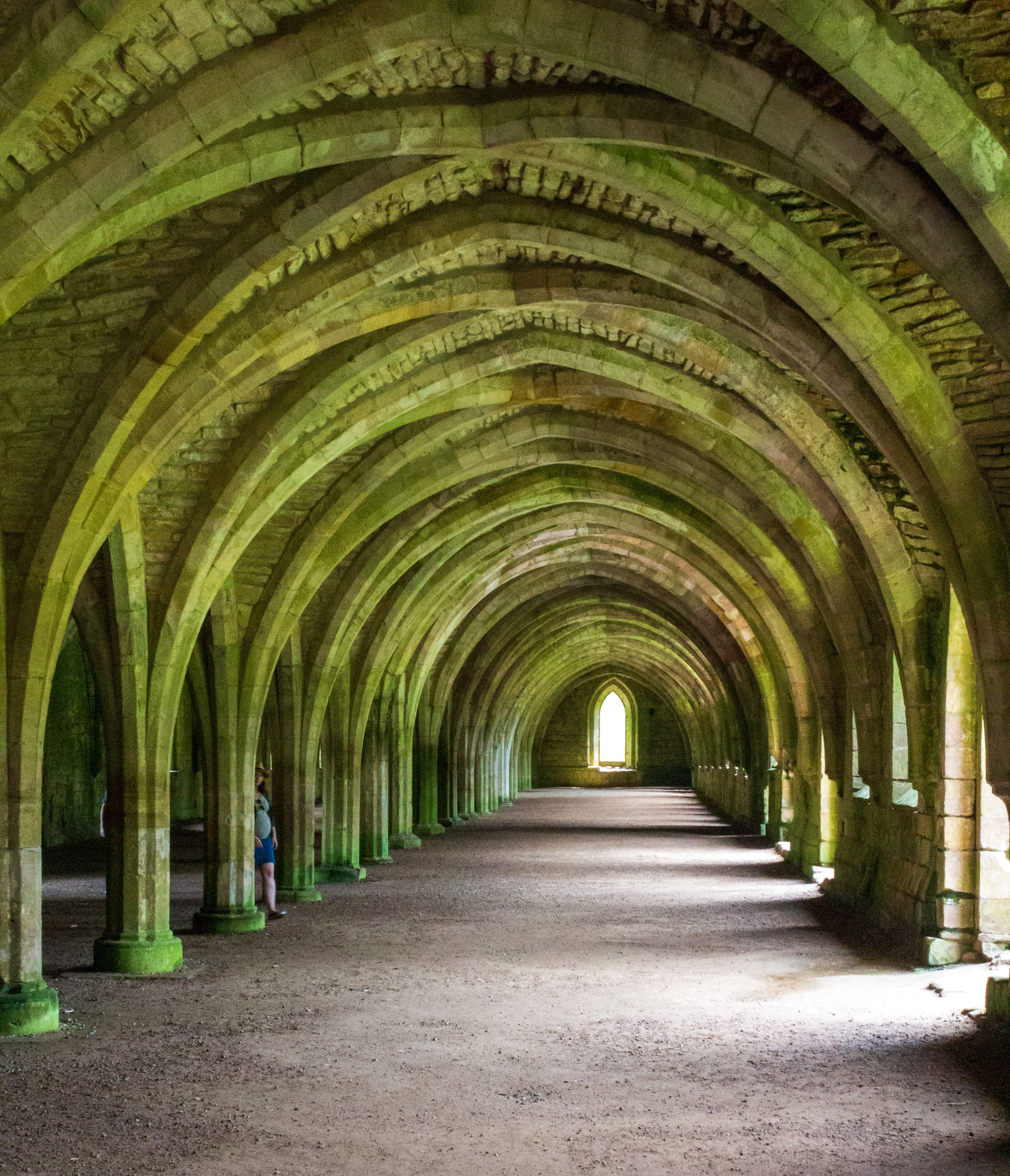Fountains Abbey
Fountains Abbey is an important Cistercian monastery near Ripon in Yorkshire. Like all Cistercian abbeys it is dedicated to St Mary.
Architecture
The original church and associated buildins were wooden.
By 1147 the monks completed a 300-foot long stone church, with 11 bays in the side aisles, and a stone cloister and chapter house. These buildings were damaged in the raid of 1146, but quickly repaired.
Between 1147 and 1179 the remaining buildings around the cloister were finished in stone - the cloister was finished with black marble from Nidderdale and white limestone. After this, the monks built a stone lantern tower at the crossing of the church nave and transepts, and a single-storey stone infirmary on the banks of the Skell.
Further building took place in the 13th, 14th and 15th centuries, culminating in the great bell tower of Abbot Marmaduke Huby (1495-1526)
History
The abbey was founded in 1132 in Skeldale by 13 monks ejected from the Benedictine Abbey of St Mary's in York following a dispute and riot. They initially lived in huts around a great elm tree.
The land for the new abbey was granted by Thurstan, Archbishop of York, who took the exiled monks under his protection. He also granted them 260 acres of land at nearby Sutton and 200 acres at Herleshowe to found granges (monastic farms) to support them.
A year later, the monks applied to be admitted to the Cistercian order, and became a daughter-house of Clairvaux Abbey in Burgundy and its influential abbot Bernard of Clairvaux. Abbot Bernard sent the monk Geoffrey of Annai to show the monks of the new abbey how to celebrate the canonical hours in the Cistercian way, and how to build wooden buildings to the Cistercian plan.
In 1135 Eustace FitzJohn of Knaresborough gave the fledgling monastery a further 260 acres at Cayton, near Ripon.
In 1143 the monks of Fountains began rebuilding their wooden church in stone. In 1146 a mob burnt the first wooden buildings in protest at the monks' opposition to the appointment of William FitzHerbert as Archbishop of York. Fountains' Abbot Henry Murdac was elected Archbishop to replace William in 1147, and was consecrated on 7 December 1147, though neither York's cathedral chapter nor King Stephen recognised him until 1151, and re-elected William on Henry's death in 1153.
The abbey soon recovered, and before 1150 founded further granges at Cowton Moor, Warsill, Dacre and Aldburgh, all within 6 miles of the abbey. The monks built a water mill close to the abbey to grind grain from the granges, and a tannery.
The prayers of Cistercians, being a strict reform movement, were considered particularly holy and beneficial to the soul, and further land grants followed, and the abbey bought more with cash they had been gifted. By the mid-1170s the abbey owned large estates in Craven, including Malham Moor and a fishery at Malham Tarn, and further estates in Nidderdale.
By 1179 the church, cloister and core buildings were of stone, and the monks had founded daughter-houses at Newminster (1138), which in turn founded a daughter-house at Roche (1147), and Lyse (1146), the first Cistercian house in Norway..
Abbots
- Richard (1132-1139)
- Richard II (1139-1143)
- Henry Murdac (1143-1147)
- Maurice (1147-1148)
- Thorold (1148-1150)
- Richard III (1150-1170)
- Robert of Pipewell (1170-1180)
- William of Newminster (1180-1190)
- Ralph Haget (1190 - present)
Founding Date
1132
Type
Abbey
Parent Location
Ruling/Owning Rank
Owning Organization





Comments